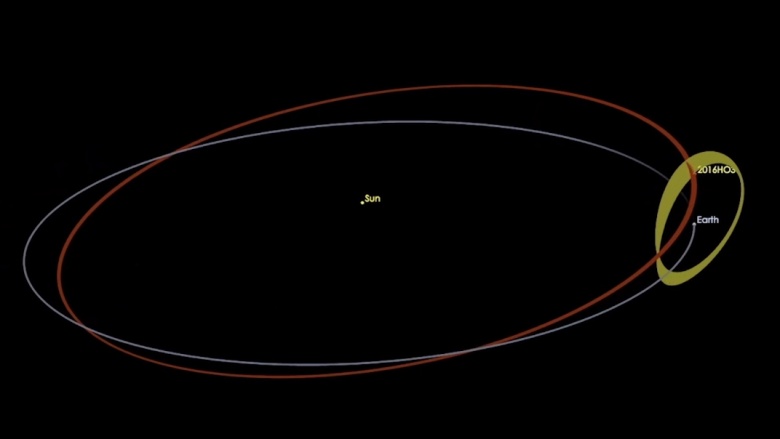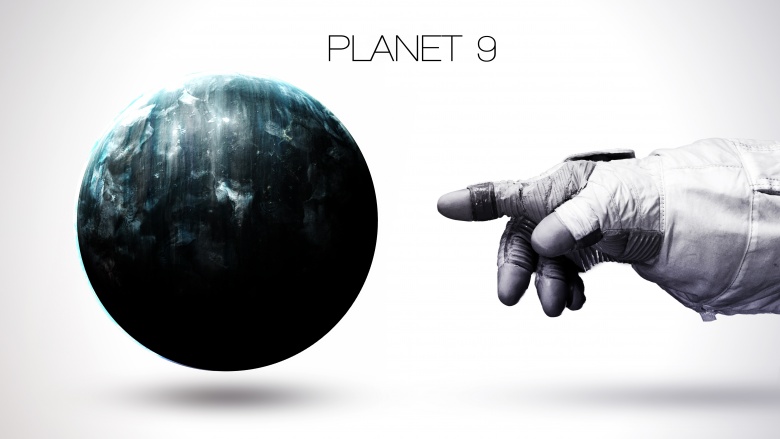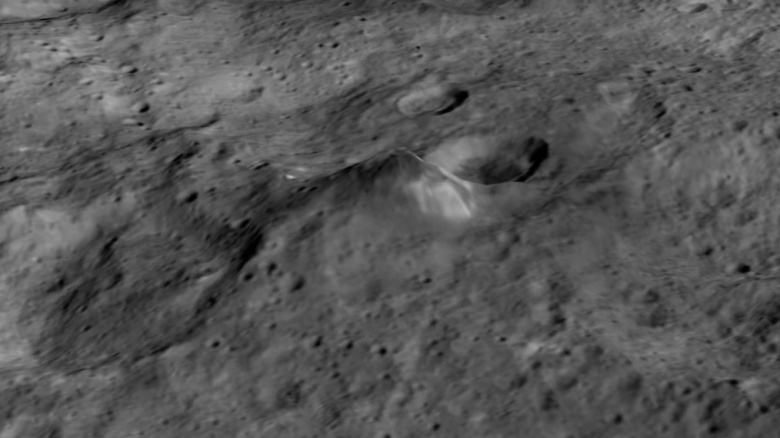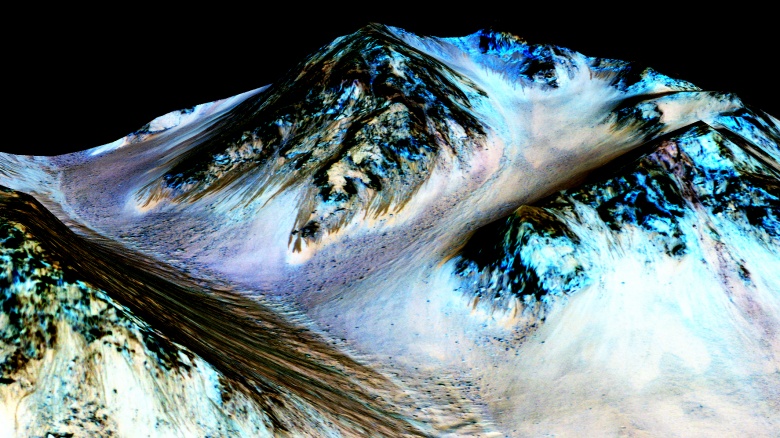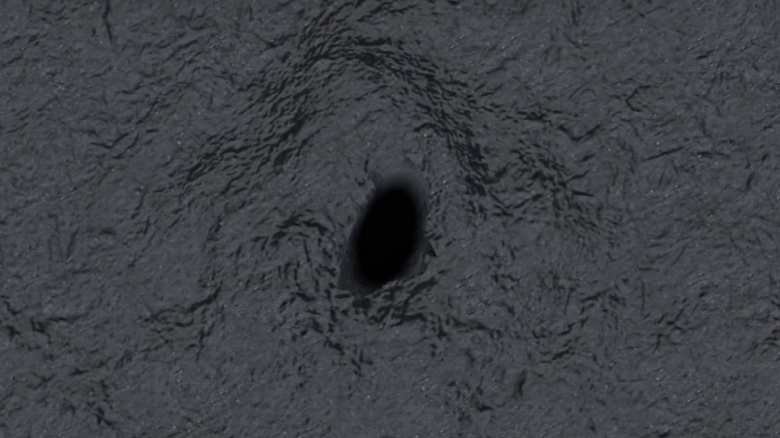Awesome Solar System Stuff We Just Discovered
Though our solar system is billions of years old, there's tons of stuff we still don't know about it. Every year, we discover newer and cooler space features we didn't even know existed, like the following that scientists only recently uncovered.
Earth's second moon
On April 27, 2016, NASA scientists discovered that Earth has a second moon. Kind of. Dubbed 2016 HO3, this travelling companion along the orbit around the Sun is actually an asteroid — much too small to be a true moon — making it only a "quasi-satellite." Despite that, it still demonstrates the primary behaviour of a satellite, in that it orbits Earth, but it doesn't do that all the time. 2016 HO3 actually orbits the Sun along a path very close to Earth's, but because of the path's shape, 2016 HO3 falls behind Earth for part of the year, while other times it jumps ahead. When it does jump ahead, it loops around our little blue planet.
Don't worry — there's no chance of a collision with this space rock. 2016 HO3 never gets any closer than 38 times the distance between the Earth and the moon, which is good because Bruce Willis can't actually save the world.
A potential 9th (or 10th) planet
While a possible 9th planet (or 10th, depending on your stance on Pluto) hasn't actually been detected, strong evidence of its presence exists. On January 20, 2016, Caltech astronomers discovered the icy dwarf planets Sedna and Biden, along with at least four other planetoids in the Kuiper Belt that have "peculiar orbits." According to these space junkies, these extraterrestrial oddities can only result from the presence of a large planet, hypothesized to be about three times the size of Earth, but still smaller than Neptune. Because of its distance from the Sun — about 200 to 300 times farther than Earth — this trans-Neptunian object takes roughly 20,000 years to spin around the Sun just once. Think about that, next time you complain about the line at Starbucks.
Strange features on Ceres
If you've never heard of Ceres, it's a dwarf planet located in the asteroid belt between Mars and Jupiter. It harbors no life whatsoever that we know of, but as of March 2016, NASA scientists discovered a few features on the little rock that they can't explain. The first is a 12-mile-wide, three-mile-high pyramidal mountain dubbed Ahuna Mons. The mountain dumbfounds scientists, as they can't explain how it formed. (Plate tectonics aren't a thing on Ceres.)
In addition, eggheads have also spotted 12 white spots, which they think are salt deposits. Like with everything scientists see in space, they think these salt deposits may clue them in on how the solar system formed. In this case, all they'll probably come up with is some literally out-of-this-world margaritas.
Water on Mars
Water on Mars may not sound that exciting unless you work for NASA or are really, really into science. But even if you're not, you really should be excited as heck about this. After all, where there's water, there's a good possibility for life. Hence in 2015, when NASA discovered that water (the darker spots in the pic) flows on Mars, the chances that life still exists on the Red Planet rose fairly high. Of course, those scientists never gave that likelihood a numeric value, which is pretty difficult (some scientists they are).
Now, it need to be mentioned that this water isn't enough to fill a stream or a brook, let alone a massive river. Therefore, if this water does support life, it won't be tall, green, multi-armed creatures, but rather bacterial life of some sort, like the fossilized kind discovered in 1996. So be sure to stock up on hand sanitizers, just in case we have to go to war with them.
Sound in space
You read that right — NASA found sound in space. It's actually a common misconception that sound doesn't exist in space. It exists — it's just that there's no gas or atmosphere to transmit it so human ears can hear it. (Alien ears may not be so limited.) So it was cool that, in 2013, Voyager 1 was able to not only pick up some sounds, but transmit them back to Earth for our listening pleasure. How Voyager 1, with the help of NASA scientists, accomplished this was because waves travel through space at different frequencies, like radio waves. Radio waves are all around us — we just need receivers and radios to detect and translate those waves into something we can understand. So as Voyager 1 went through and exited the heliosphere — a magnetic field created by the Sun — it picked up waves at various frequencies, ranging from 300 Hz to 3 kHz. And from the sound of them, space needs a good tuning.
Pluto's Ice Volcano
In July 2015, when NASA's New Horizons probe buzzed Pluto, it sent back the clearest photos of Pluto ever. Among those pics, the craft captures images of what scientists believe to be a volcano. True, volcanoes in and of themselves aren't that exciting, as we already have our own here on Earth. But Pluto's volcanoes are different because, instead of lava, these volcanoes spew ice. Plus, this isn't some teeny-tiny ice volcano. The landmass, named Wright Mons after the Wright Brothers, is about 90 miles across and 2.5 miles high, or 150 kilometers by 4 kilometers. So while it's about half the size of Mount Everest, it looks huge on the little grey marble that is Pluto. Now all NASA needs to do is figure out a way to make use of this perpetual ice machine.
Rain on the Sun
Thought they knew about it for decades, in 2014 NASA scientists found out a little bit more about the weather the giant thermonuclear explosion that is the Sun experiences. Suffice to say, they knew that Sol's weather is always hot, but they didn't know how hot. For instance, the Sun's rain comes in the form of plasma — supercharged gas, basically, like lightning. So these aren't raindrops you'd want to catch on your tongue, not that you could. In addition to being extremely hot, these plasma drops fall at a speed of 200,000 KPH, or 120,000 MPH. Oh, and each one's about the size of Ireland.
But despite these huge differences, solar rain forms in pretty much the same way that Earth rain forms. Who knew that, outside of Arizona in the summer, our planet had so much in common with the Sun?

